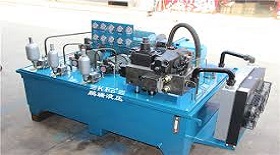The hydraulic system structure
The hydraulic system consists of two parts: signal control and hydraulic power. The signal control part is used to drive the control valve in the hydraulic power part.
The hydraulic power part is represented by circuit diagram to show the relationship between different functional elements. The hydraulic source contains hydraulic pump, motor and hydraulic auxiliary components. The hydraulic control part contains various control valves, which are used to control the flow, pressure and direction of the working oil. The actuator part contains hydraulic cylinder or hydraulic motor, which can be selected according to actual requirements.
When analyzing and designing the actual task, the block diagram is generally used to show the actual operation status of the equipment. The hollow arrow represents the signal flow, while the solid arrow represents the energy flow. Action sequence in the basic hydraulic circuit, reversing and spring resetting of the control element (two-position four-way reversing valve), extension and retraction of the executive element (double-acting hydraulic cylinder), and opening and closing of the overflow valve. For both the actuator and the control element, the presentation is based on the loop symbol, which also prepares the loop symbol.
Depending on how the system works, you can number all loops in turn. If the first actuator number is 0, the control element identifier associated with it is 1. If the element identifier corresponding to the actuator extension is an even number, the element identifier corresponding to the actuator retraction is an odd number. Not only should the hydraulic circuit be numbered, but also the actual equipment should be numbered in order to detect system failures.
The DIN iso1219-2 standard defines the element number composition, which includes the following four parts: equipment number, loop number, component identifier and component number. If there is only one device in the whole system, the device number can be omitted.



